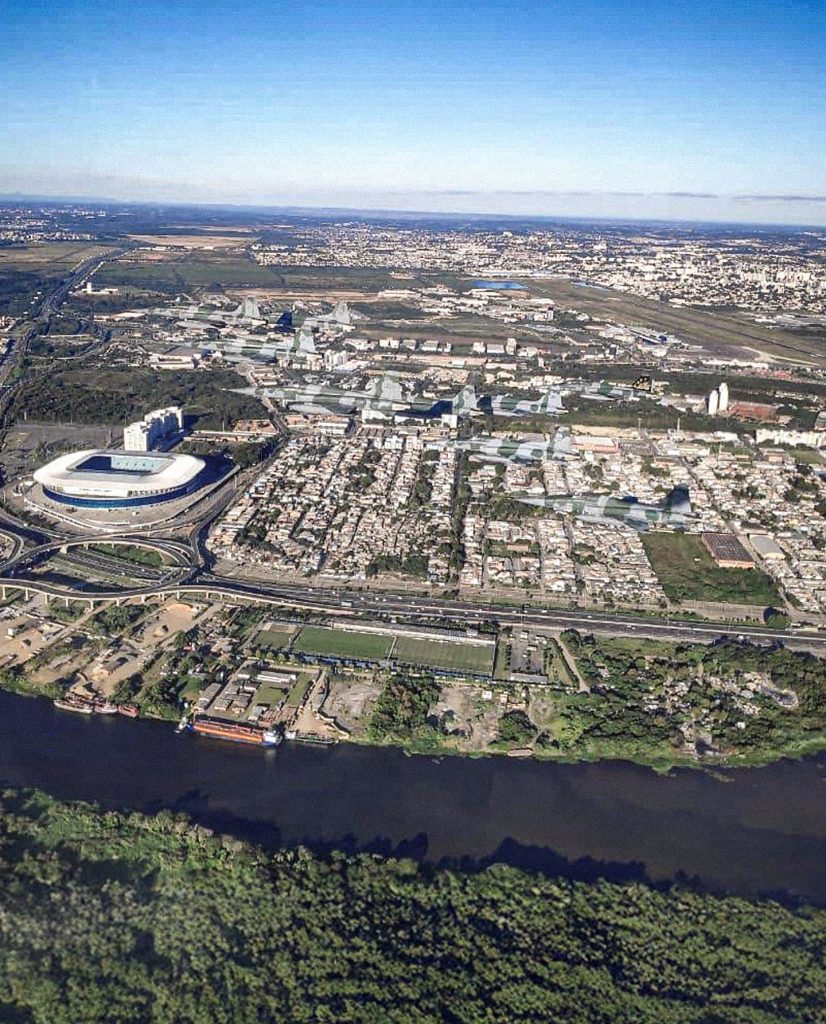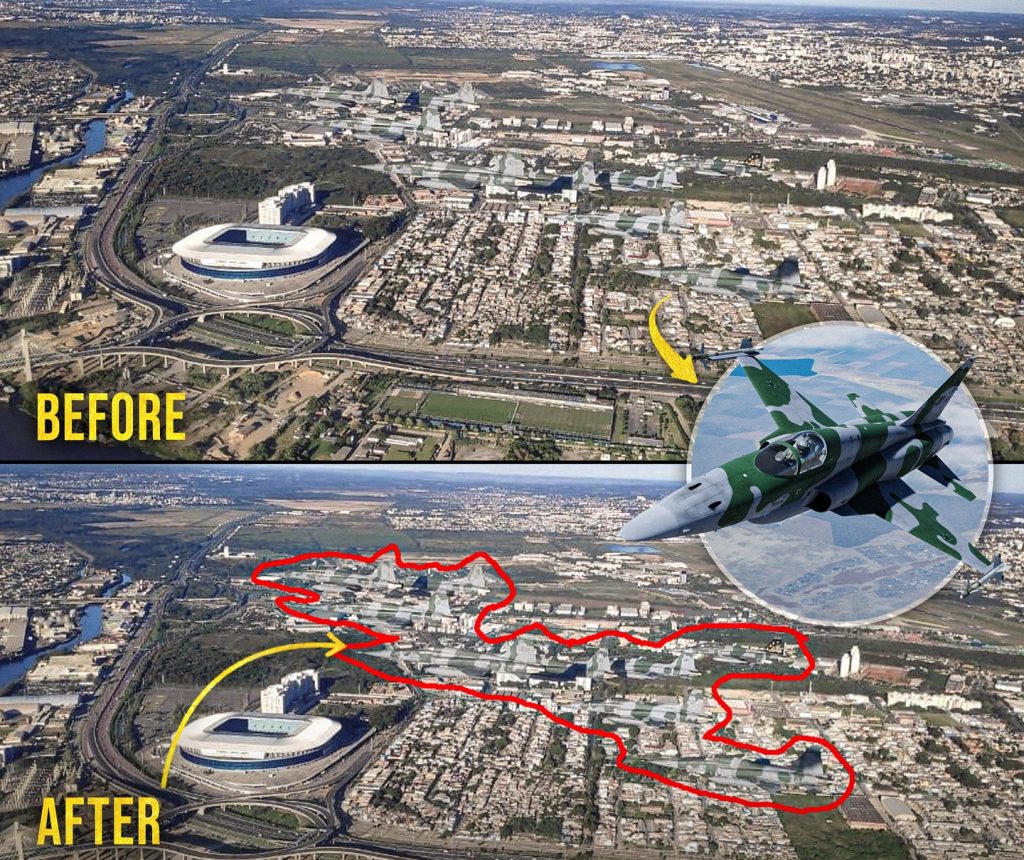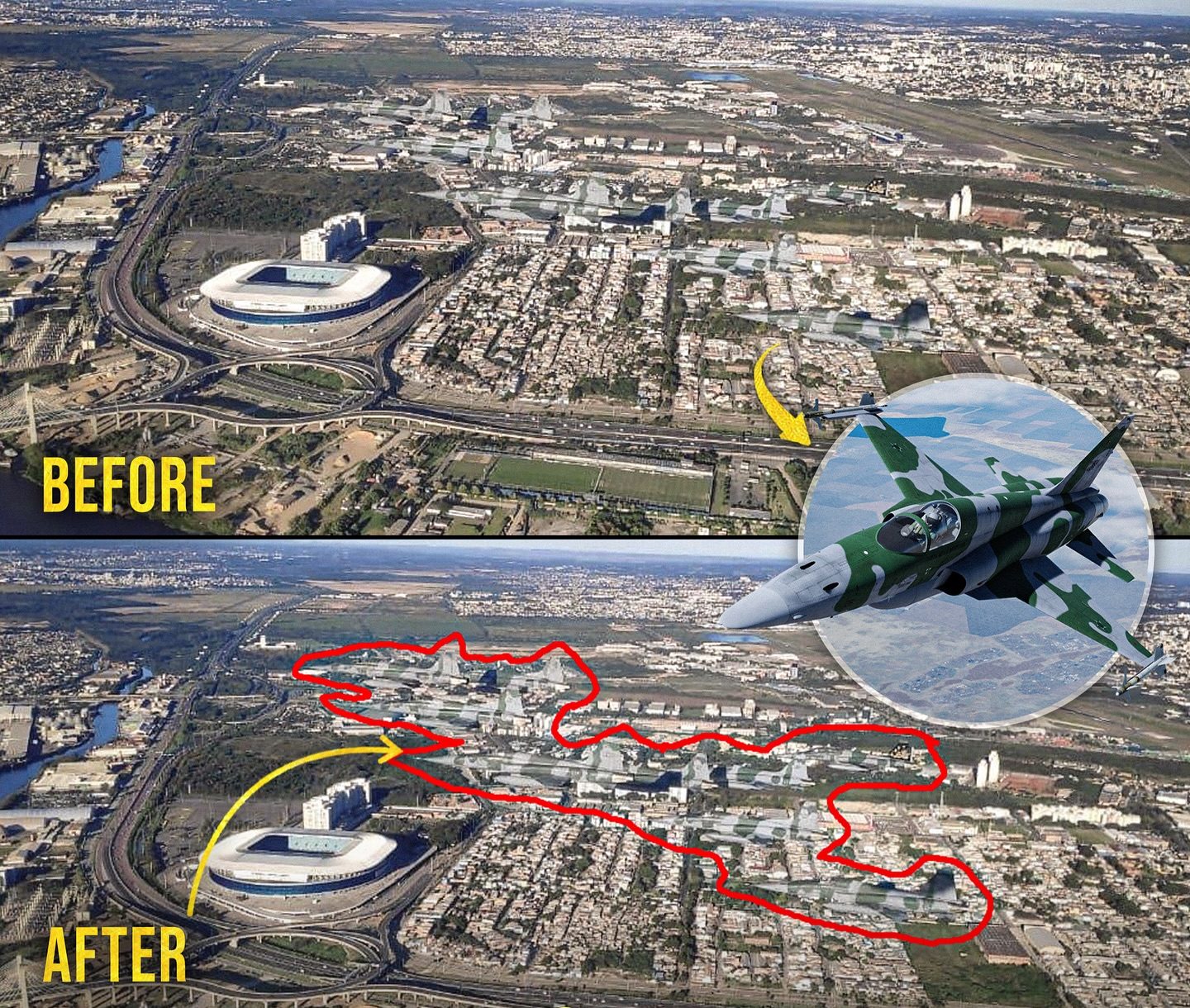These Photos Reveal Just How Effective Fighter Jet Camouflage Really Is
At first glance, the city skyline in these photos looks ordinary. There’s the stadium, the houses, the roads, and the usual spread of rooftops and concrete. But then you’re told to look closer, and suddenly, the picture changes. Hidden within the landscape are fighter jets, camouflaged so well that your eyes glide right past them. The “before” and “after” view captures a remarkable truth: camouflage works not by making something invisible, but by tricking your brain into believing there’s nothing to see.
For decades, militaries have known that the battlefield isn’t just about firepower, it’s also about deception. Camouflage is one of the simplest yet most effective tools in that playbook. Unlike the idea of invisibility, which belongs to science fiction, camouflage is all about blending in. Fighter jets are painted in patterns that mimic the colors of their environment, from the green and brown of forests to the grays and blues of the sky. Against a backdrop of buildings, runways, or open land, these designs scatter the outline of the plane, breaking up its familiar shape and making it nearly impossible for the human eye to detect instantly.

The photographs highlight exactly how this works. In the first image, without the jets, everything looks crisp and clear. In the second, the jets are present but almost undetectable. They melt into the background, their shapes hidden in plain sight. Your brain is programmed to look for patterns it recognizes, like rooftops, roads, and fields. When a jet is painted with disruptive camouflage, it doesn’t look like a jet at all—it just becomes another part of the scenery. That split second of confusion is critical. At high speeds, where seconds can mean survival or destruction, that tiny delay in detection can make all the difference.
This isn’t new. During World War II, planes were painted with bold stripes or cloud-like patterns to confuse observers on the ground and in the air. Naval ships used “dazzle” camouflage with geometric patterns that made it hard to judge their speed and direction. Today, fighter jets still rely on similar principles, even though radar and digital tracking have changed the game. Camouflage against human eyes still matters, especially at low altitudes, during surprise attacks, or when jets are parked on the ground waiting to take off.

What’s fascinating is how our own perception plays into it. We assume spotting a massive aircraft should be easy. After all, these machines are loud, fast, and large. But vision doesn’t always work that way. The human brain processes what it expects to see. A jet painted in solid black against a city skyline would pop out immediately. A jet covered in greens, grays, and earthy tones tricks your brain into filing it away as just more background noise. By the time you realize something’s there, it’s already moving past you.
The effectiveness of camouflage lies in its simplicity. It doesn’t make the object vanish—it makes you ignore it. And in military strategy, being ignored just long enough to act first is often the ultimate advantage. These photos capture that lesson in the most striking way. One moment, you’re looking at an empty city view. The next, you realize it wasn’t empty at all. The jets were always there, and you didn’t see them until someone pointed it out.
It’s a reminder of how human senses can be deceived, how technology can exploit psychology, and how something as basic as paint patterns can still be as important as the most advanced weaponry. Fighter jet camouflage doesn’t make planes invisible—it makes them forgettable, and that may be the most dangerous trick of all.

